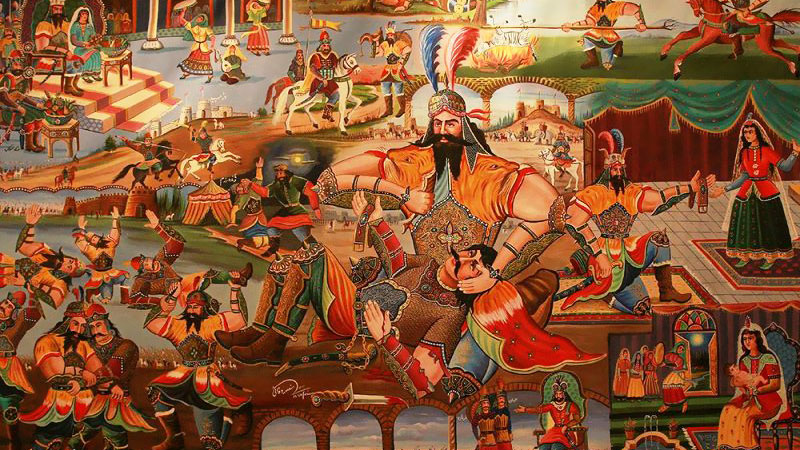Jalāl al‑Dīn Rūmī’s Masnavi‑ye Ma‘navi (Spiritual Couplets) stands as one of the pinnacles of Persian literature—and one of the richest guides to Sufi thought ever composed. Often dubbed the “Persian Quran,” the Masnavi unfolds in six books and over 25,000 couplets, weaving together fables, parables, and anecdotes to illuminate the soul’s journey toward Divine Love. In this post, we’ll explore how Rumi uses story after story to convey subtle truths, why the Masnavi earned its lofty nickname, and how you can approach its teachings today.
A Brief Introduction to the Masnavi
-
The poet and his context. Rumi (1207–1273 CE), a Persian‑speaking theologian and mystic, settled in Konya (modern‑day Turkey) after fleeing Mongol invasions. His circle of disciples clamored for spiritual guidance—and Rumi responded by composing the Masnavi over roughly twenty-five years.
-
Why “Persian Quran”? Just as the Quran is considered a living guide for Muslims—revealing layers of meaning each time it’s read—the Masnavi serves as an inexhaustible spiritual manual for seekers, unpacking Qur’anic principles in story form. Its text is revered not only for poetic beauty but also for its capacity to transform hearts.
Structure: Six Books, One Unified Vision
The Masnavi is divided into six “books,” each self‑contained yet part of an overarching tapestry:
-
Book One opens with the famous “reed‑flute” lament—our souls’ longing for the Beloved—and includes tales of prophets, animals, and everyday figures.
-
Book Two continues the thread with stories of kings and brigands, illustrating how pride and attachment block the path to God.
-
Book Three delves into ethical quandaries, from generosity and greed to the perils of hypocrisy.
-
Book Four often takes a more devotional turn, celebrating the saints and the ecstatic state of wajd.
-
Book Five weaves in tales of wandering dervishes, illuminating the grace that comes through poverty of spirit.
-
Book Six culminates the journey, presenting Rumi’s boldest statements on annihilation in God (fanāʾ) and subsistence in God (baqāʾ).
Throughout, Rumi treats each anecdote as a gemstone: polished by context and commentary, it reflects a facet of Divine Reality.
Key Stories and Their Spiritual Lessons
Below are just a handful of the Masnavi’s most beloved tales—and the teachings they unlock:
| Story | Summary | Core Teaching |
|---|---|---|
| The Reed‑Flute’s Lament | A reed‑flute, torn from the reedbed, mourns its separation from the whole. | The human soul’s innate longing to return to the Divine Source. |
| The Elephant in the Dark | People touch different parts of an elephant in a dark room and argue over its true nature. | Partial perspectives lead to misunderstanding; true knowledge arises in spiritual illumination. |
| The Guest House | Rumi likens the human self to a guest house, where joy and sorrow alike arrive unbidden. | Embrace all emotional experiences as divine messengers, for they sanctify the heart. |
| The Donkey and the Lion | A donkey, pretending to roar like a lion, fools other animals until exposed. | False pretenses and egoic posturing collapse when love and sincerity are absent. |
| Mullah Nasreddin and the Oil Lamp | Nasreddin searches for his lost key under a lamp post, not because it fell there, but because the light’s better. | Seekers often look for God where it’s easiest instead of where He truly resides—in the heart. |
How the Masnavi Mirrors the Quran
-
Story as Exegesis. Just as the Quran employs parables to guide reflection, Rumi’s tales unpack spiritual concepts through narrative.
-
Layered Meanings. A single couplet or anecdote may carry legal, moral, and metaphysical dimensions—much like Quranic verses invite tafsir (interpretation) at multiple levels.
-
Transformative Aim. Recitation of the Masnavi was—and remains—a devotional act. In Rumi’s gatherings, disciples would hear a story, ponder its teaching, then strive to embody its lesson in daily life.
Approaching the Masnavi Today
-
Read Slowly, Out Loud. Hearing the Masnavi in its original cadence (or in a rhythmic English translation) awakens the heart to its subtle harmonies.
-
Contemplate One Story at a Time. Select a single tale—say, “The Guest House”—and journal how each emotion in your life might be a guest bringing a lesson.
-
Pair With a Guide. Commentaries by later Sufis (such as ʿAtāʾullāh’s Heft Jawshan) or modern translators (e.g., Coleman Barks, Murshid Sa‘īd Fakhr) can illuminate cultural allusions and deeper mystical points.
-
Practice the Lesson. If a story emphasizes generosity, challenge yourself to give anonymously; if it highlights humility, notice moments when pride surfaces.
Conclusion: Beyond Admiration to Transformation
Rumi’s Masnavi is far more than an anthology of charming tales. Like the Quran it so beautifully echoes, it is a roadmap for the inner path—inviting us to exchange our ego’s flimsy scripts for the Divine Story written on every heart. By engaging its stories not only with the mind but with the living presence of our own experience, we turn the Masnavi’s ancient couplets into the sustenance of our modern souls.





